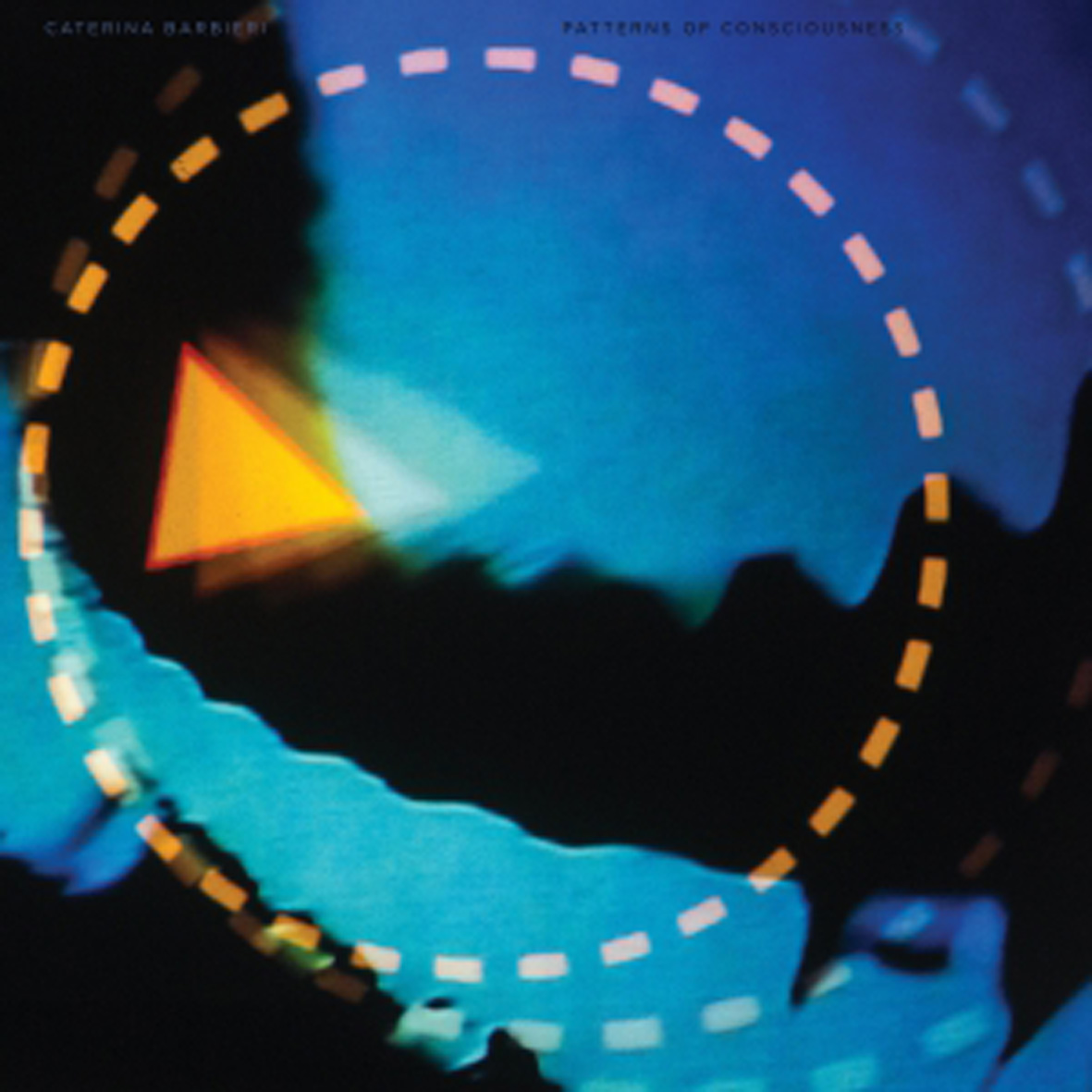 Following a handful of elusive limited edition cassettes, Berlin-based composer Caterina Barbieri makes her formal debut in a big way with this massive and mesmerizing double LP epic.  On one level, Patterns of Consciousness is quite possibly the epitome of Important Records' long-standing obsession with pure synthesizer albums.  On deeper level, however, this album is a unique and ambitious experiment that also happens to be synth-based, as it is structurally inspired by Barbieri's interest in baroque lute music and conceptually inspired by a desire to trigger a fracture in consciousness through subtle shifts in hypnotically repeated patterns.  Either way, it is quite an achievement.
Following a handful of elusive limited edition cassettes, Berlin-based composer Caterina Barbieri makes her formal debut in a big way with this massive and mesmerizing double LP epic.  On one level, Patterns of Consciousness is quite possibly the epitome of Important Records' long-standing obsession with pure synthesizer albums.  On deeper level, however, this album is a unique and ambitious experiment that also happens to be synth-based, as it is structurally inspired by Barbieri's interest in baroque lute music and conceptually inspired by a desire to trigger a fracture in consciousness through subtle shifts in hypnotically repeated patterns.  Either way, it is quite an achievement.
This is actually Barbieri's second full-length for Important (or for any label, for that matter), as she first surfaced in 2014 with Vertical on the label's Cassauna imprint.  Predictably, that album was similarly synth-centric (it was composed for a Buchla 200), but otherwise bears little resemblance to this latest salvo.  All of the vocals, techno touches, drone elements, and grinding textures from that release earlier are gone and forgotten, which makes sense, as it seems like Barbieri was still finding her direction at that point.  I think she has conclusively found it now, as Patterns seems much more like an inventive, coherent, and honest fusion of her far-reaching and esoteric aesthetic and conceptual interests.  In fact, it would be an understatement to say that Barbieri has an interesting background for a modern synth composer, as she has studied classical guitar in Italy, extensively researched the history of Hindustani music, and written a thesis on "3D spatialization and the perception of time, space and sound spectrum in vertical music."  In the wrong hands, such a resume would undoubtedly translate into something rather bloodless and over-cerebral, but Barbieri proves to be quite adept at using her deep knowledge to take relatively accessible and vaguely Kosmiche music into more transcendent and psychotropic realms than usual.  The closest stylistic antecedent for Patterns of Consciousness is prime/early Tangerine Dream, though Barbieri has clearly assimilated that influence in a rather curious and oblique way.
The area where Barbieri's unique sensibility manifests itself most conspicuously is that of structure and sequencing.  For example, each piece is composed of just a few simple intertwined patterns and nothing more, unrelentingly pulsing and burbling along from anywhere from 5 to 15 minutes with no significant new motifs or melodic shifts ever turning up to disrupt the entrancing spell.  Also, on a larger scale, the album itself is structured rather bizarrely: each piece that has an actual name, such as the opening "This Causes Consciousness to Fracture," is followed by a much slower piece with the same title presented as an acronym ("TCCTF," for example).  The two pieces seem paired in name only, unless any shared patterns are slowed to complete unrecognizability, yet they certainly seem designed to give the album a very unusual rhythm (the more complex and kinetic pieces are always followed by languorous and comparatively simple ones).  That disorienting dynamic push/pull pattern is not broken until the final piece, the slow-moving coda of "Gravity That Binds."  Despite their significant differences, however,these seven pieces are thematically held together by a thread of strong, uncluttered melodies and enormous attention to small-scale dynamics.  Given the understated nature of the album, Barbieri keeps the effects subtle, but her constant tweaks are more than enough to keep her themes sounding fresh: nothing is ever static and all of the various threads are constantly shifting in relation to one another and leaving a vapor trail of bleary after-images.
If Patterns of Consciousness has a fault, it is only that its mantric repetition, deceptive simplicity, and minimalist aesthetic do an unintentionally fine job of concealing Barbieri's more radical intentions.  Also, I am not sure that her foundational premise was actually successful in "unfolding new layers of perception" or unlocking unused psychic potential in me, though I doubt such changes would register all that dramatically in the conscious mind if they occur.  The subject certainly interests me, but I have historically had much more of a noticeable psychoactive response to experiments with inaudible frequencies than I did with these shifting patterns.  Still, it was a valiant effort that yielded an unusual album, so there is little to grumble about.  More importantly, no one at all would care about the conceptual ambitions of this album if the actual music was not good (which it is), so any triggered hallucinations, revelations, or breakthroughs into a higher mental plane are just icing on the cake.  In particular, I was most struck by some of the slower, later pieces on the album, such as "INTCAEB" and "SOTRS," which resemble a sort of narcotic, sensuous, and bittersweetly melancholy twist on an organ mass.  More significantly, Patterns of Consciousness as a whole feels like a major artistic statement through sheer obsessive repetition, slow-burning accumulation of power, and Barbieri's singularly lute-influenced and arpeggio-heavy approach to modern synth composition.  It is extremely damn hard to establish a distinctive voice wielding only a synthesizer, but Barbieri has succeeded admirably at it.  No one else sounds like this.
 
Read More

